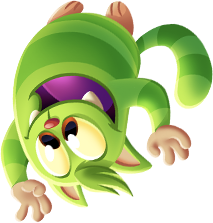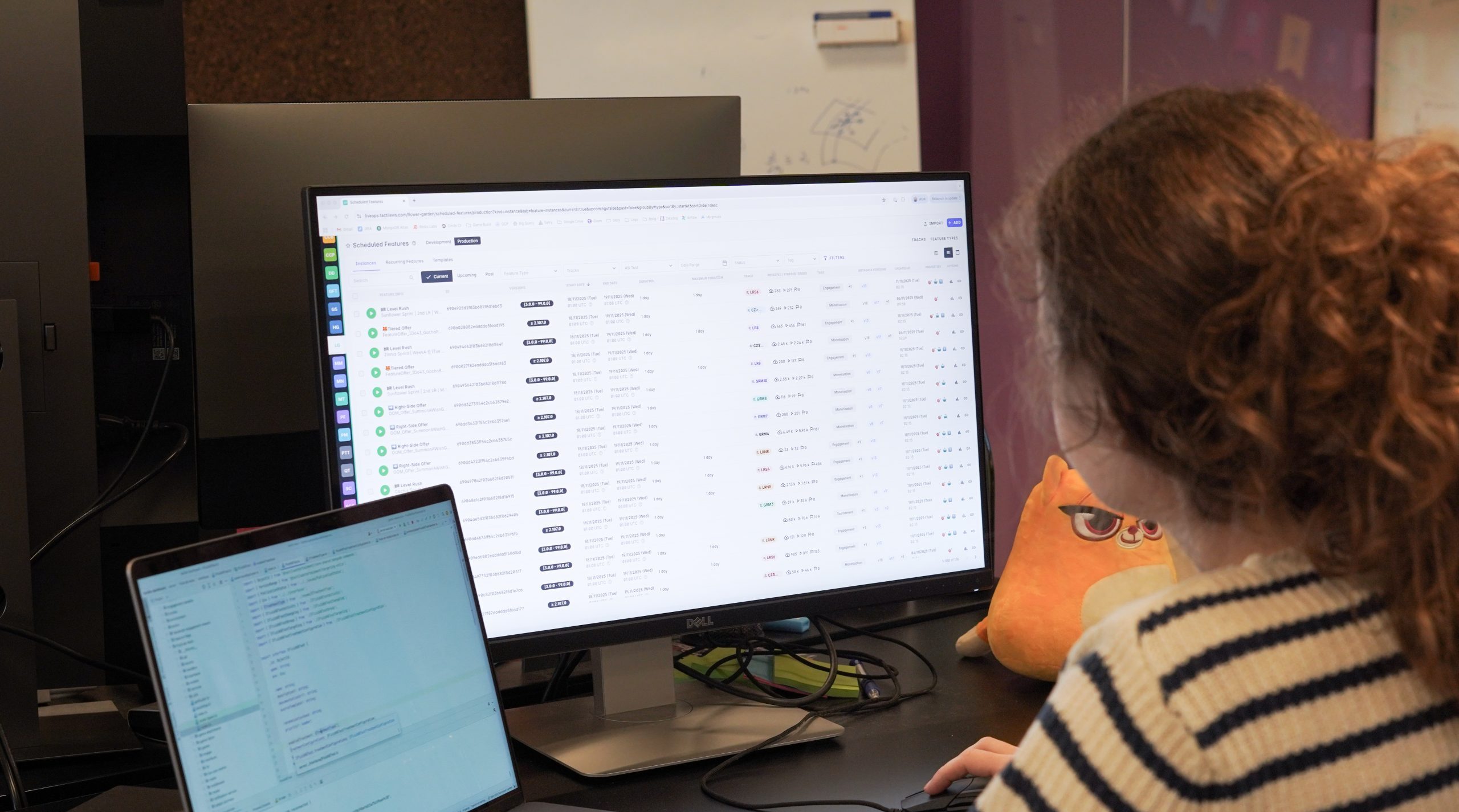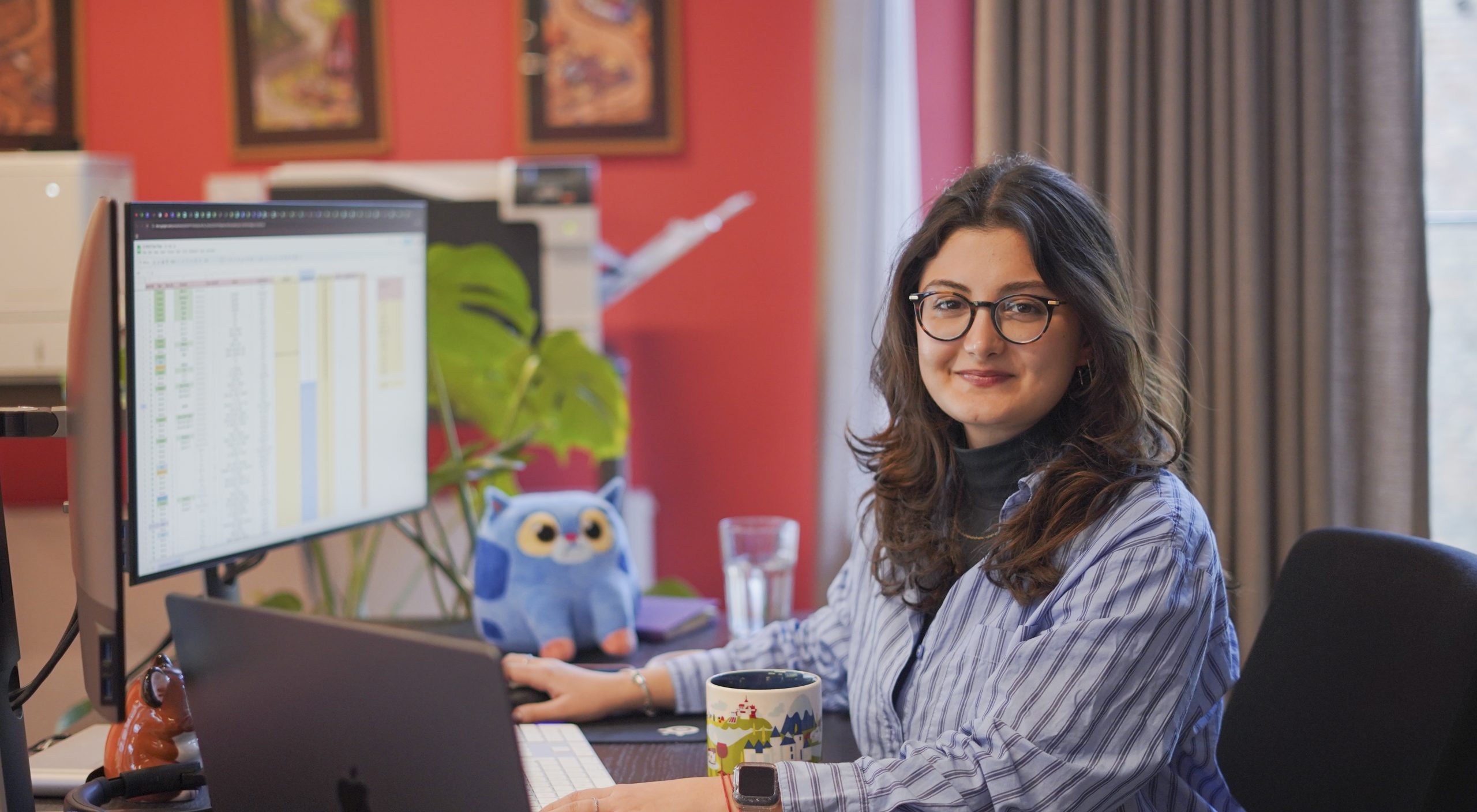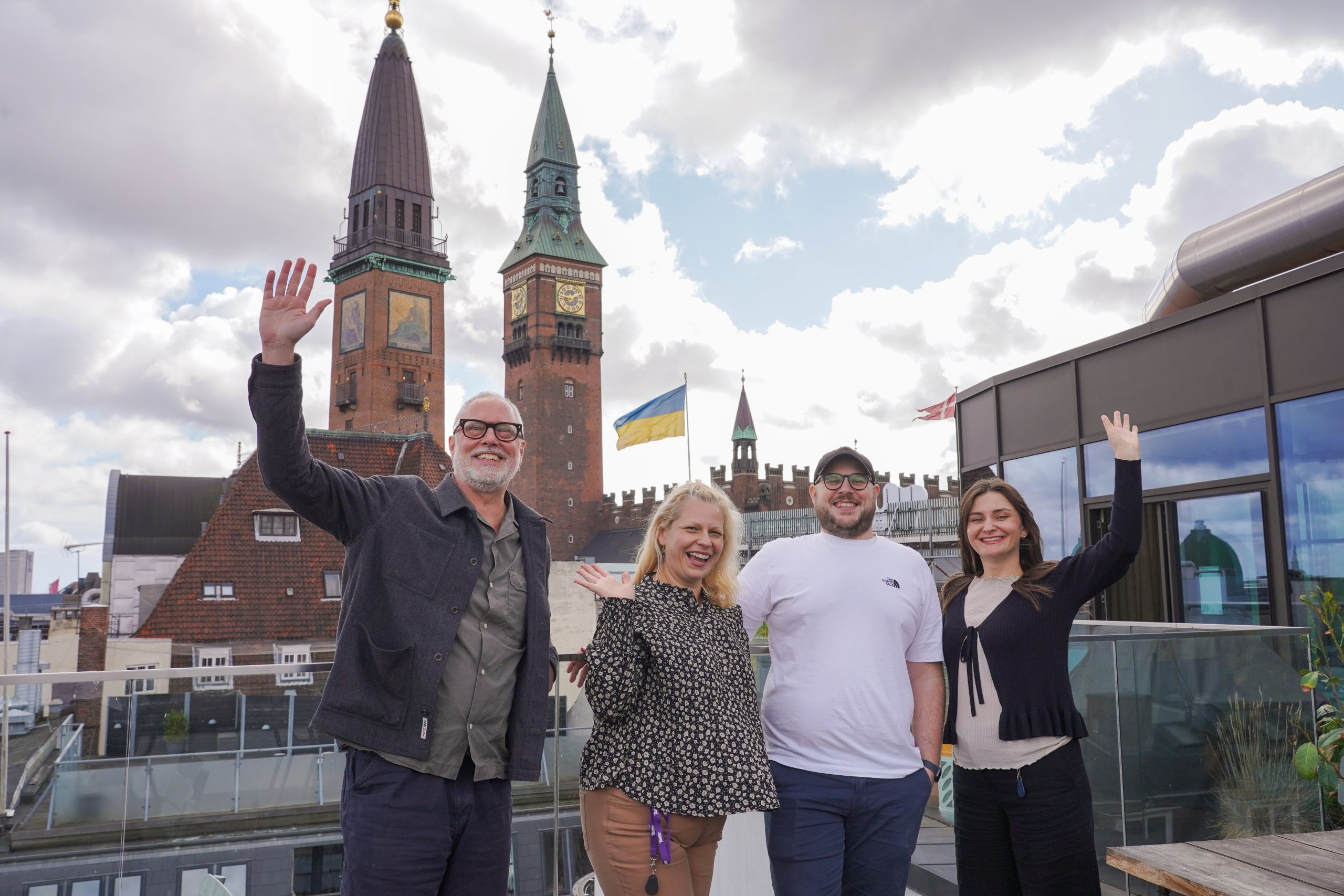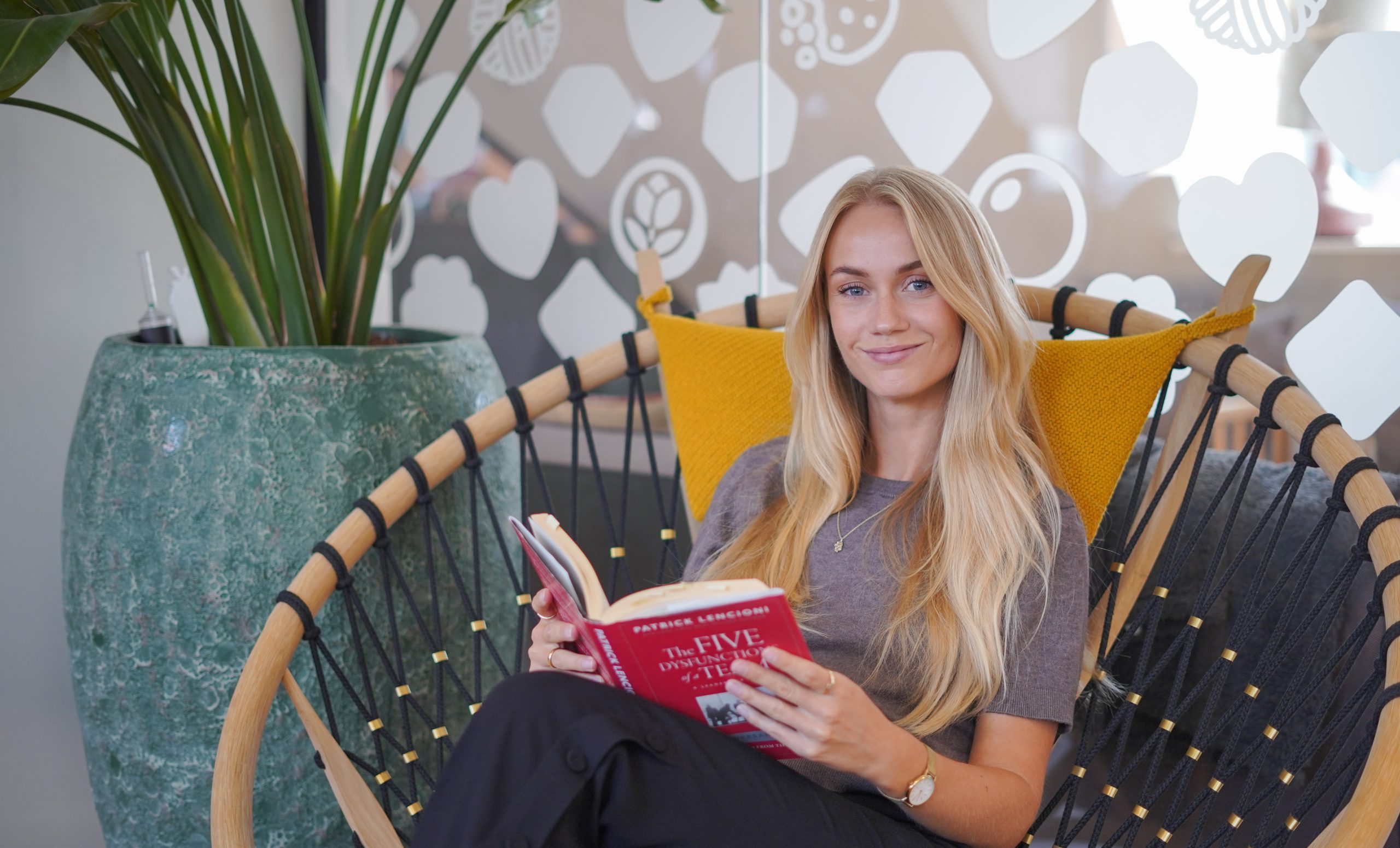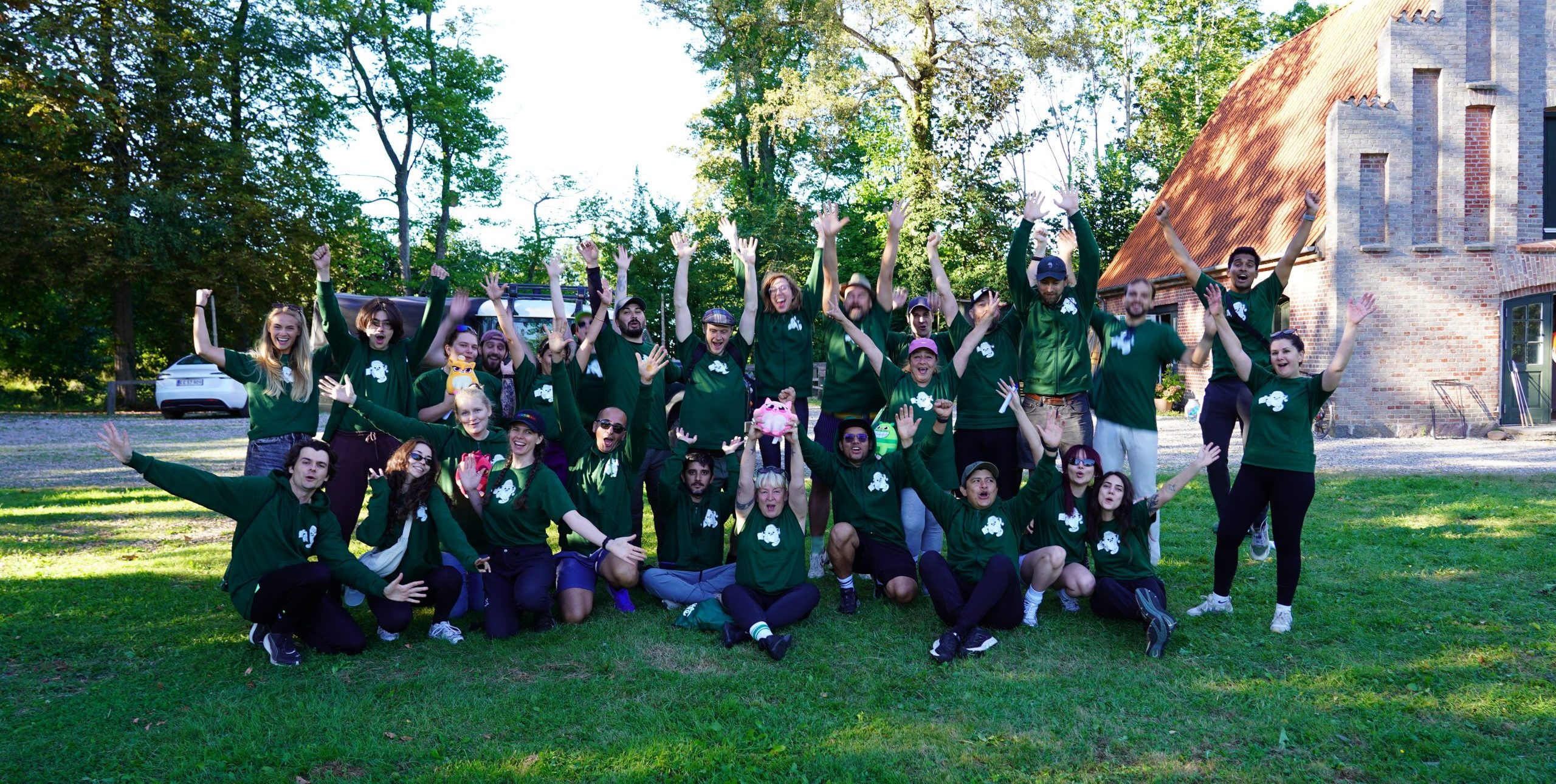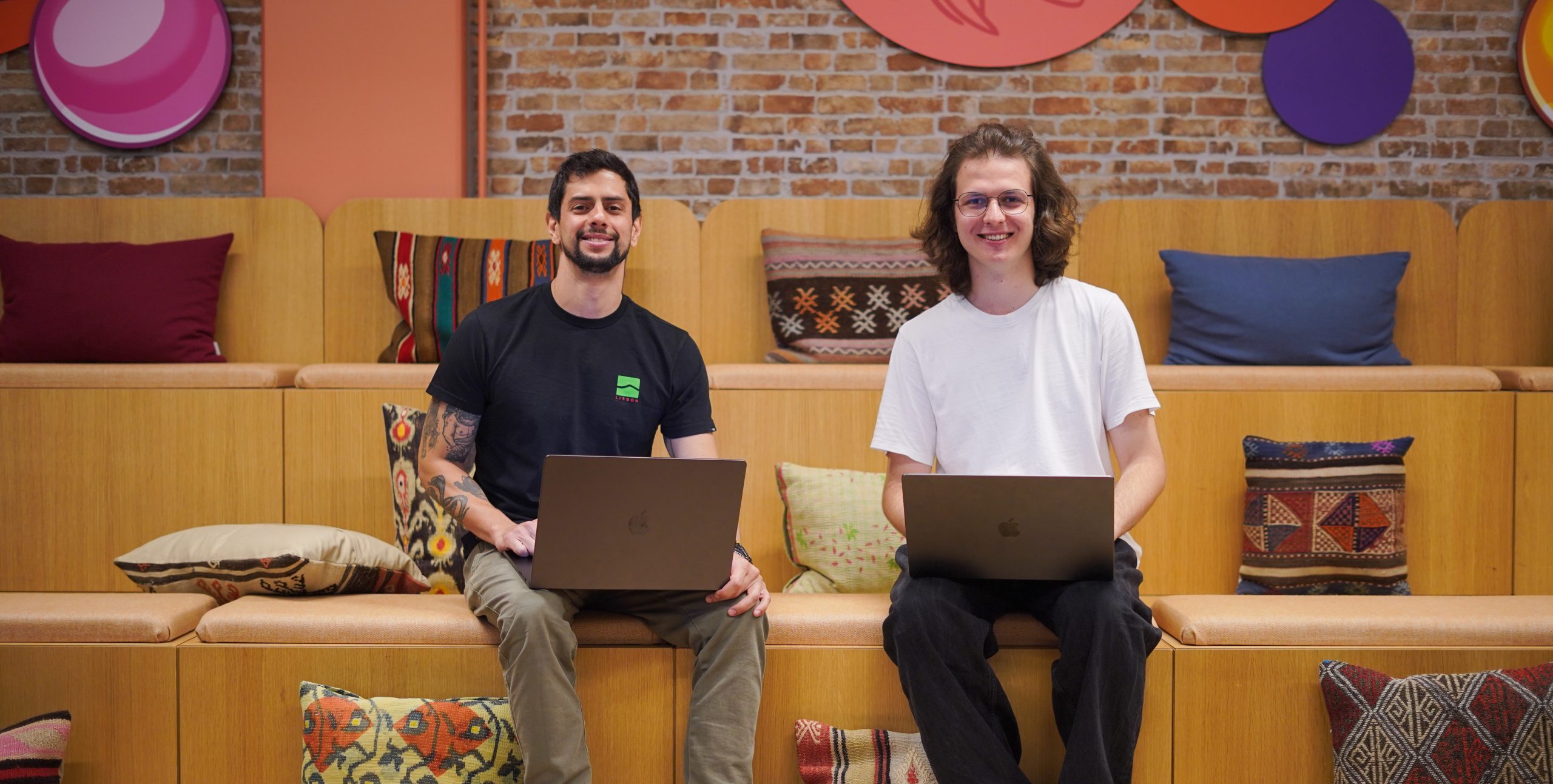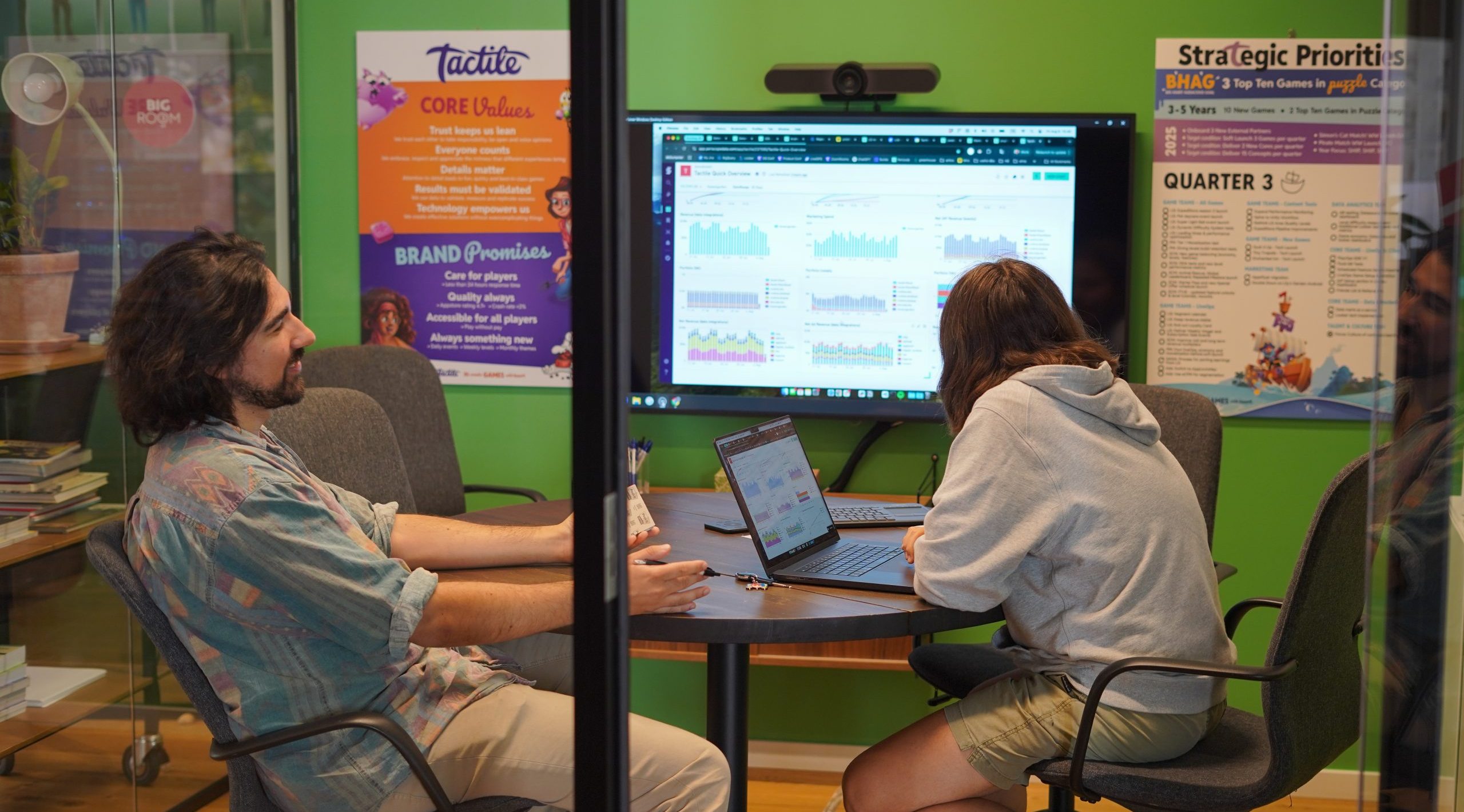Behind the curtains: What it takes to make a new story chapter in Lily’s Garden
Back in 2019 when we released Lily’s Garden to the world, we knew we made something special. Despite the fact that the match-3 puzzle game market was already saturated, what made this game stand out from the crowd was its storyline. Players come to our games for many reasons, but we believe that what keeps them there for the long run is our narrative.
And so throughout the last 5 years, Lily’s Garden storyline became one of the main pillars of the game. Like with a favourite TV show or book, we have a distinct group of players that keep coming back to the game to find out what’s going on with their favourite characters. And within Tactile, we have a dedicated team focusing solely on producing brand new content for them. We truly believe that if you get the story right, it absorbs the players and creates an extremely devoted player base. Ultimately, this is what sets us apart, gives the game a strong personality and helps to hold players in our world.
Building new in-game story chapters and days, however, is no joke and it quite literally takes an army to do so. As a company, we follow the principles of agile and lean development in everything that we do, including in the development of our story narratives. Our Lily’s Garden story team is an extremely efficient and unique high-level team, with an incredible amount of talent. They are working on the foundation of story writing that has been cultivated at Tactile for many years.
And so to dig deeper into how the team developed such an efficient workflow over the years, connecting many different disciplines into producing new weekly content for our players, we sat down with two of our Story Directors, Saran and Chris.
Pre-production
Being a 5 year-old game, Lily’s Garden has a very established content pipeline. Every week, we release a new story day, which is a part of the overarching story chapter. Choosing the setting for each chapter is key. The great thing about how we do things here at Tactile is that ideas can come from anywhere and everywhere – we do a lot of player testing, in order to see what characters, locations and tasks are interesting to them, but we also have the entire story team pitching in with their own ideas. This enables the team to explore different game settings and go to a bunch of fun locations (most recently, Lily has been to Denmark, Australia and Germany, and will be heading to Japan next).
Once the core focal point of the story chapter is defined, the Story Director, writers and Area Art Lead meet for an initial brainstorm. They ask themselves questions like, “We’re going to this new location, what parts of it do we want to see in the game?” or “What is going to make this chapter fun and engaging?” or “What are we trying to convey with this storyline, is the focus on love, family, mystery, or something else?”. From there, they do a further breakdown of how they want to plot the story throughout individual story days. At this stage, they will also think about new characters that could enter the storyline.
“When we go to all these places in our games, it gives us a chance to do some edutainment, and that’s what makes the story so special,” says Lily’s Garden Story Director, Saran. In one of the story chapters of Lily’s Garden sister game, Penny & Flo, the characters went to Thailand and so we hired a consultant to learn more about the local culture, habits, language and people. ‘It is important for us to convey these through our stories, doing our best to honour the local culture and local environmental issues,’ adds Chris, who was the Story Director on Penny & Flo when the Thailand chapter was released. ‘For example, in the Australian storyline, we addressed the issue of reef preservation, so the focus is always on real culture, real people and real issues,” adds Saran.
The team is never just working on one story day or chapter at a time. At the time of writing, the team is wrapping up chapter 12, working on the pre-production of chapter 13 and already brainstorming ideas for upcoming chapters (which the players will get to play in late 2025 😲).
The creative process
The full cycle of creating a single story day in Lily’s Garden takes a whole month!
At any given point, every story day of the overarching chapter is at a different stage of the production pipeline. The different stages include story writing, area art and set-up, 2D and 3D art, as well as cinematic art. The game’s Story Director is like an octopus, stretching their limbs into and giving feedback to the different areas of production. This set-up enables the story team to move as fast as possible to get a new story day out to our players. The aim is always to create something that will be satisfying for the player, but also isn’t going to overwhelm the team whilst trying to produce it.
Saran has developed a bit of a ‘mad scientist’ brainstorming process over the years. When it’s time to nail down the high-level chapter ideas, she likes to use the floor, rolls of butcher’s paper, colourful pens and sticky notes to map it all out visually. She thinks about everything that will happen in a chapter and divides it into individual story days, which are kinda like episodes in a TV show. She thinks about what order of events makes most sense and draws out story map charts. It’s all about finding the right rhythm of the story.
Contrary to that, Chris, who is currently the Story Director of an upcoming project, uses a different workflow approach. Because his team is much smaller, he didn’t have a writer until very recently, and so he took advantage of the flat structure we have here at Tactile. “I would often talk to people who are available for a chat, pitch an idea to them, explain it using a whiteboard and see their reaction. Are they getting it? Do they have any feedback or ideas? And this could be absolutely anyone from Tactile, not only people from my direct team,” explains Chris. This gives people a break from their usual tasks, but also gives us the opportunity to find solutions using the internal resources we have available. Chris adds: “Nailing the tone of the game’s storyline is so important and so exposing what you’re working on to different people’s reactions and seeing how it lands is great!”
It takes an army
Story direction & writing
At the beginning of creating a new story day in Lily’s Garden, Saran will make a flowchart of all the tasks the players will need to complete (i.e. ‘Remove the weeds’, ‘Catch the pigeon’ or ‘Design the Hotdog Stand’ 😎). After that, the chart is passed on to the writing team, who writes the dialogue, providing context for the tasks the players must complete to move forward in the storyline. Saran will often rely on the writers for feedback, notes and involve them in new chapter brainstorming sessions.

After the dialogue is written, Saran will present the flowchart to the rest of the team and give them new tasks. All the different functions will then start working on their tasks simultaneously. The writers write, the 2D artists create story images, the 3D artists work on animations, and the implementation specialist prepares the area for work. When all of this is done and imported, the torch is handed over to the localization team on one side, and the implementation specialist on another to prepare it for the Cinematic Artists, who round things off by bringing it all together in Unity, our game language. As a side note, we translate our in-game dialogue into more than 10 languages(!), to ensure we give the best experience to our non-English speaking players as well.
Character Art
Whilst the writers write, the 2D team starts working on the 2D characters and depending on the storyline, they might need to create new characters from scratch, or add more expressions and positioning for existing characters to match the new dialogue. As mentioned previously, they will also create new story images, which are normally representing character dreams, flashbacks or memories.
Once their work is done, they hand the torch over to the 3D team. The 3D team uses the character designs created by the 2D team to then model, rig, and texture, and adds onto that by creating that character’s animations. This also allows them to breathe life into that character (for example, what does “celebration” look like for Lily vs Holly vs Luke). They also create the outfits that players can dress the main characters in. Sometimes, they also help create pets that the player can adopt in the meta layer of the game.
Area Art & Implementation
At the same time, the Area team prepares all the new area art, which includes drawing all the areas for the new location the story chapter is set in. They create everything layer by layer, object by object – and there’s many!
Our Area Implementation Specialist will then grip all the layers and move them to Unity. Their role is a little bit like the Story Director role in that it is not just one set step, but they come in at various stages of the pipeline, collaborating with different teams. When all the assets are moved, our Implementation Specialist will set up everything in Unity so that different makeover options are grouped together as a task, and set the layering of every individual item in an area so that characters may walk in front of or behind it. They are also responsible for lighting and prop effects (like how the flowers bounce after you choose them, for example). Finally, they also collaborate a lot with the Cinematic Artists – if they need a character to appear in the middle of a nearby forest, they might ask the Implementation Specialist to remove some trees so they have space, or if a character is cleaning a tower, they may ask to add a ladder. This role truly is the jack of all trades.
Cinematic Art
Bringing the story day production pipeline to an end are the Cinematic Artists (CAs). Based on Saran’s flowcharts, they make the cut scenes come to life. They take all of the 2D and 3D art, animations and dialogue, and bring those together in the scene. You can kind of think of them like puppet masters or stage directors. They have a library of animations made by the 3D team for all of our characters, but the CAs are deciding where the characters are standing, where, when, how fast, and how they move from place to place, what animations they use at which dialogue line (both for speaking and reacting characters), where and how the camera is moving, and more. ‘They come up with things that surprise even me,’ says Saran, ‘For instance, recently there was a scene where a character was embarrassed over something and they used her sneaking animation to quietly exit the conversation. It cracked me up! In chapter 12, when Luke sings, they used his shouting animations with a shaking camera, which is also hilarious. So they leave their own stamp on the story in ways like these!’
Once the CAs are done with their work, the quality assurance (QA) Game Testers come in and test everything on both the story and gameplay side of the game.
In this day-to-day flow, the team is working on 4 story days in parallel, as well as preparing for new chapters. On top of the main storyline, the team also supports all the additional features, such as the makeover events, Lily’s Memories (an in-game item collection event) and the indoor story within Lily’s Garden.
We were not joking when we said it takes an army to build new story content for Lily’s Garden – and our amazing team has been releasing a new story day every week for the past 5 years! The Story Director role is crucial in ensuring we can keep to this production timeline. Chris elaborates: “In our work, we create value when the players play our game – and in order to get new content out to players, we must stay lean as a team. Our focus is on not overproducing content. We produce less and get it out to players fast, so that we can get their feedback, reflect on it, learn and grow.” Releasing one story day per week might seem like a lot for such a small team to produce, but it’s doing the reps and keeping sharp that makes the process better and more optimised over time.

Releasing new content is also made easier with a great story foundation like Lily’s. It gives an opportunity to show how the characters change, grow and evolve over time, and how they handle new situations. The Story Director’s role is to always find new things to do in the world of Lily’s Garden, how to bring in new characters, but also develop old relationships (Holly and Lily, Luke and Regina 👀) and re-use older characters.
Breaking silos
Whilst Saran inherited a very well set-up system on Lily’s Garden, there’s always room for improvement.
These days, when she’s getting ready for the new story chapter, Saran will bring together all the individual area leads (for 2D art, 3D art, narrative, Area art & cinematics), present the rough plan for the story and ask for the team’s input. This is an extremely important part of the team’s creative process. Here’s the top reasons why:
👉 It enables them to catch things up front, which would be too difficult to implement in the game. For example, the area specialist is helpful on the technical side, as they will flag ideas that will be too difficult to set-up.
👉 For the creative process itself, it’s great to have more hands-on feedback, as well as more feedback from different people. Someone might also have more insight into the locations where the story is going, so involving them in developing the chapter’s narrative is crucial.
👉 It helps to prevent the team working in silos and contributes to getting everyone onboard! The Story Director and individual area leads will still be the main decision makers, but it’s important to have more opinions and fresh ideas on the table. It also builds trust and communication skills.
👉 Engaging more people into the creative process means that everyone has a real impact on the development of the game’s storyline. That is the first step to getting the story to live in everyone’s heads and to get people to talk and think about it. For Chris, it’s one of the most rewarding things when someone from his team, who is not a writer, comes up with a narrative suggestion because they have been following the story.
👉 Sharing ideas and tech between different teams enables innovation. For example in an upcoming project, players will be able to control characters and move them around the space, which would not have been possible without great cross-team collaboration.
About the co-authors
Saran Walker is our Lily’s Garden Story Director. She started her career in gaming in sunny California, working as a Writer at Pixelberry Studios. From there, she went on to manage their editorial team, which ultimately led her to her current role in story direction. In her free time she loves to sew, paint and go to the movies.
Chris Lovick is a veteran Game Director in the industry, coming all the way from Canada. Since he joined the company 3 years ago (at the time of writing), he supported in directing many of our projects, most notably Lily’s Garden sister game Peny & Flo, and more recently a brand new project (currently in development 🤫).
